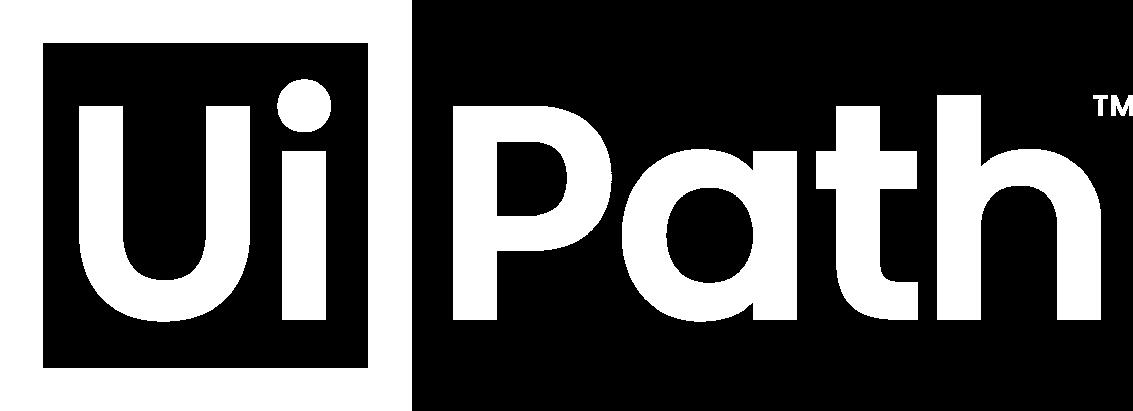Using automation to innovate and drive efficiencies


DIGITAL REPORT 2022









Nowhere is realising ‘the art of the possible’ more relevant at UiPath than in its cutting-edge Immersion Lab, an innovative space demonstrating and exploring the potential for automation.
“It's a place where customers can see what our automation really means in terms of being shown, not just told, because, in many ways, this technology feels rather abstract,” explains Boris Krumrey, VP for Automation Innovations at UiPath.
“We have two missions: one is showcasing ‘the art of the possible’, and the other is to help drive digital transformations by looking at automations from an innovation perspective.”
Having joined UiPath in 2017, he has had a long and varied career in IT, from Accenture to Atos, where he was in charge of robotics and automation, envisioning the future of RPA.
“I realised the future will not be outsourcing standardised processes and reducing cost with labour arbitrage. It is bringing robots to work side-by-side with people, which will revolutionise how people work.”

With the power of automation, UiPath is driving innovative solutions to problems faced by organisations around the world and revolutionising the way people work
By making software robots taking on repetitive and automatable work, from moving files and folders to extracting, copying, and inserting data, humans can be freed to focus on the things they do best: innovating, collaborating, creating, and interacting with customers.
“The key essence of UiPath is that we create software that emulates what people are doing on computers,” explains Krumrey. “Whether you’re a small business or a big business, it doesn't matter: wherever you have to handle data and use it across multiple applications, we automate it in a reliable way.
“Our Automation platform involves utilising AI and computer vision to understand computer screens in the same way as humans do. The robot is now intelligent enough to reliably identify all these objects and avoid interruptions even if something gets changed,” says Krumrey.
“Whether you’re a small business or a big business, it doesn't matter: wherever you have to take data and do something with it, we automate it in a very reliable way”
UiPath: Automating to innovate
BORIS KRUMREY GLOBAL VP FOR AUTOMATION INNOVATIONS, UIPATH “We went beyond RPA by including all phases of the transformation (discovery, operation and innovation).”
Unseen before, the UiPath Business Automation Platform enables non-technical people to create their own automations. This ‘citizen development’ aspect, according to Krumrey, allows individuals to be involved as co-creators in the automation process.
“We saw how people in businesses wanted to drive more innovation from a technology perspective faster and they had to due to the pandemic,” he says. “Our RPA technology was designed to enable those non-technical office workers to create automations or to generate the process documentation whilst they were doing the activity. And that kind of new productivity tool was unseen before.”
Citizen developers play a vital role in helping organisations to scale the technologies that underpin digital transformations. With research by UiPath showing that 86% of employees wish for the opportunity to acquire new skills, utilising citizen developers can take the pressure off automation developers and help organisations scale automation by casting a wider net of automation development.
“If you compare the typical approach – having people sitting together, spending months to create the process documentation until this is implemented –it could take eight or nine months for large companies,” Krumrey points out.
“The benefit of our automation platform is that you can build automations in smaller chunks bit by bit in a shorter development time to realise a complex end-to-end process automation. It is the answer of bringing IT and business operations together in fusion teams to accelerate the digital transformation,” Krumrey adds. “Most transformations fail around the lack of change management. So engage employees
TITLE: GLOBAL VP FOR AUTOMATION INNOVATIONS
INDUSTRY: COMPUTER SOFTWARE LOCATION: UNITED KINDGOM
Boris Krumrey is Global VP of Automation Innovations at UiPath. In his role, Boris is responsible for driving the UiPath Automation Innovation agenda to ‘reboot’ work and make automation at scale a reality for customers and partners. In 2019 Boris and his team launched the UiPath Immersion Labs, both a physical space and a virtual platform designed to inspire businesses to explore new customer and work experiences.
In his initial role as Chief Robotics Officer at UiPath, Boris oversaw the product roadmap vision and integration design of Robotic Process Automation and AI technologies. Prior to UiPath, he led the Automation and Robotics Business for Atos as part of the Global Application Management Service Delivery.


Powering up contact centres with its Conversational AI capabilities, Cognigy is working with UiPath to develop innovative solutions for transforming CX

A global leader in enterprise Conversational AI, Cognigy is hyper-focused on powering up the contact centre to exceed customer expectations, improve agent satisfaction and respond to market changes.
And through a collaboration with UiPath, organisations will soon be able to benefit from the seamless integration between the two platforms, says Philipp Heltewig, Cognigy’s CEO and Co-founder.
Through solutions including Conversational IVR and Agent + Assist, Cognigy supports human agents in handling customer inquiries by monitoring the conversation and providing AI-powered help to the agent in real-time. Among Cognigy’s success stories is the powering of all of Lufthansa Group’s chat-based self-service options, which gives customers the ability to chat with virtual agents employing the power of AI and machine learning.
“These solutions, of course, scale in realtime to meet demand. Contact centres simply can’t go from 1,000 agents to 10,000 agents within five minutes,” says Heltewig.
“However, with our virtual agents, the enterprise has infinite capacity to scale to help customers, without the wait times usually associated with contact centres. As an UiPath advanced technology partner, Cognigy benefits from a native integration between the two platforms,” Heltewig says. “And with a joint robotic call centre automation bundle to be taken to market in the future, it is an exciting time for the partnership.”
“It will be a fully automated robotic call centre service solution that seamlessly integrates Cognigy with the UiPath enterprise automation platform,” he explains.
“And one person we’re working with is Boris Krumrey, UiPath’s global VP of Automation Innovations. He’s a great champion for Cognigy, and we are very glad to be working with him and the team to continue developing innovative solutions for transforming customer and employee experiences together.”
Learn more
with citizen development initiatives or show them ways to generate automation ideas, so that they participate in shaping their own digital future operation. Enabling and up-skilling workers to perform automations themselves will reduce resistance to change in the workforce."

A market leader in the automation space, UiPath benefits from a broad range of functionality, from the integration of APIs to introducing custom-built machine learning models.
“It is really intelligent automation with all the digital tools from discovery, innovation and operation,” Krumrey explains. “You can build web applications, you can integrate and use APIs in long-running workflows. You can embed all kinds of machine learning
– whether it's a custom-built machine learning model, computer vision, or a document – in terms of understanding the type, handwritten forms, the natural language in documents, and extracting information. And now, with our latest acquisition of Re:Infer, we have a Natural Language Processing (NLP) engine that can make sense out of a large volume of unstructured texts in emails or documents.”
Whether in the form of emails, documents, chat logs or social messages, research has found that over 80% of enterprise data is unstructured, meaning that it cannot be easily analysed and used to improve business operations or outcomes. By mining, monitoring, and extracting context and semantics from this unstructured data, messages and documents can be transformed into useful and actionable business data.
When combining Re:Infer with the UiPath Automation Platform, developers can now easily build automations that optimise the customer experience (CX) and operational scalability of contact centres.
“Think about how many situations we have where people send emails as part of a long-running process,” Krumrey adds. “That's immensely powerful if the robot ensures that the needed data is collected and entered into the backend systems without any human intervention. It will address a lot of those customer service challenges as we still very much rely on email.”
Automate to innovate with design thinking Organisations need to think about their overall digital strategy when it comes to innovating with automation. Krumrey explains: “This means that organisations have to anticipate what their future digital operations look like and how the roles and

“We saw how businesses were forced to drive more innovation from a technology perspective when the whole pandemic came”
VP
responsibilities of workers change. Our platform offers all components to support a company's digital transformation strategy requirements whether it is in customer experience or a fully-digitised supply chain operation, optimised finance operations, automated B2B operations, etc. If you include the ecosystem of our Technology Partners then the spectrum of the digitisation capabilities expands even further and delivers a totally new way for companies to interact with their customers.
“Utilising RPA can offer a number of benefits, from streamlining operations and increasing productivity to providing cost savings for organisations,” he observes. “That's often the initial trigger point for many companies to drive the digital transformation, but the actual important ask is: ‘How can I create better customer service?’
“I suggest a design thinking approach,” Krumrey adds. “For example, if you’re a big recruiting agency and you want to reinvent the way recruiting is done, you look at your talent – that's your customer journey - and you look at the recruiter who is the anchoring persona for the end-toend service journey. You break down the journey in phases, identify the operational challenges and develop automation solution ideas to address these. In this way, you cover long-running processes, handoffs, and tasks for automation that assist the recruiter and improve the customer experience for the talent.”
Krumrey believes that with design thinking, we will finally start thinking about automating organisations role by role, instead of running automation programs on a much more granular process-by-process basis. This approach will scale up the digital transformation programme much quicker and engage the individual more effectively.
“We can actually build a robotic twin of, for instance, an accountant and redefine the role as a financial business analyst,” he says. “The heavy leg work of an accountant is now done by the robotic twin covering multiple processes and tasks.”
BORIS KRUMREY GLOBAL VP FOR AUTOMATION INNOVATIONS, UIPATHThe end goals of the automation journey The end goals of automation are clear:
“You are creating a digital automation or digital operation that works very closely with the human to drive it, but you are eliminating all the work with data-thirsty applications”
according to McKinsey, 2.6 trillion hours of work per year are automatable in the U.S. alone. By utilising robots to automate tasks, organisations can make people’s work more valuable and fulfilling and bring more value to the business.

“First of all, you are digitising your operation,” Krumrey says. “You’re creating a digital automation or digital operation that works very closely with the human to drive it, but you are eliminating all the work with
data-thirsty applications. Thus, humans are taking more decisions, while spending less time feeding data into systems. The second aspect is that you are reducing that manual effort, giving back to employees more time for things that bring more value to the business,” he adds. “For example, in customer service, if we can automate the entire email and voice communication for standard requests about order status inquiries or placing an order, then human agents only need to handle the exceptional cases or where people cannot follow the standard procedure. Those cases are then served by a human, while everyone else, who just had a standard inquiry or an order request, gets served immediately by a voice-enabled robot.
“This is particularly critical in unexpected customer transactions of high volume like in the COVID-19 pandemic,” Krumrey explains. “When COVID broke out, a high volume of tickets had to be cancelled. Vouchers had to be created. Imagine the cost and effort involved to staff, who had to handle such a situation with many temporary workers to meet the demands. But if you had automated the processes, then peak volumes can be handled quickly and configured on the automation platform – that's what automation will help to drive. Consequently, customer experiences will be improved, and processes will be running faster and more efficiently whilst providing real-time process data to explore customer
services quality.”
With a technology partner like Cognigy and other conversational AI partners, UiPath is continuing to
develop innovative automation solutions for organisations. One such example was a solution demonstrating the ‘art of the possible’ to one of the biggest airport organisations in Southeast Asia, which allowed customers to book flights and check in through a voice-enabled robotic call centre agent speaking fluently in Mandarin. “With Cognigy, we had a perfect solution, a showcase, where you could book your flight by just calling and talking to the robotic call centre agent in a natural way,” Krumrey elaborates. “Imagine how this can help with all the multi-lingual customer service demands. Now, companies are paying a lot of money for temporary contact centres in countries with lower costs.
“We also developed another interesting use case of reinventing IT support with UiPath and Cognigy in which a voiceenabled robotic call centre agent could assist the end user with a pre-installed UiPath robot to capture all relevant technical configuration data (e.g. network configuration settings, screenshots) and log an IT Helpdesk ticket from the user desktop on behalf of the user,” Krumrey adds.
“Since UiPath has the highest enterprise-level security, especially in combination with the Crowdstrike integration, this futuristic use case is actually safe to realise and offers a totally new way of delivering IT workplace services.”

The future is semantic automation “UiPath solves the big challenge of turning business processes into software and creating a much simpler user engagement process layer that is connected to all the underlying application systems of an enterprise without changing them,” Krumrey explains. “This is what we call the Automation Fabric. The faster and easier we can make it for business users and/or automation developers to build the Automation Fabric, the more we will be able to digitise and innovate business processes. Thus, when the automation platform understands not just the semantics of elements on the computer screen but is able to make sense of unstructured data to intelligently map it to the target application system, then we have found the magic wand of artificial process intelligence to generate the process automation across application systems.
“One could say, AI codes the automation flows connecting end-to-end processes across e.g. SAP and Salesforce with minimal review and guidance by the process specialist,” concludes Krumrey. “That is what we see as the future of intelligent automation. We are calling it Semantic Automation.”

“People are afraid of change. Have you thought about enabling and skilling up your employees so that they can do the small
themselves?”

